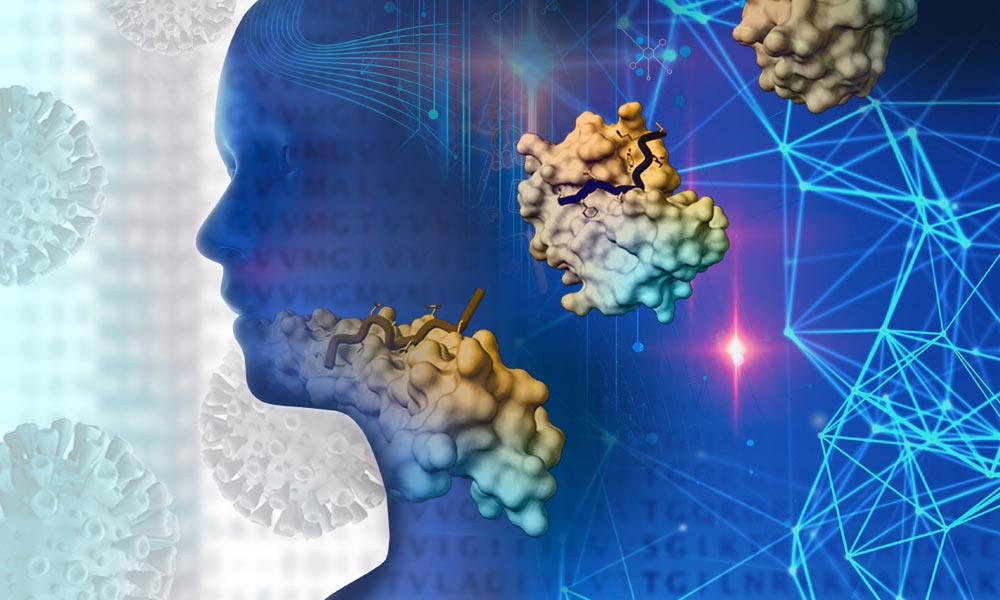New Biochemical Clues in Cell Receptors Help Explain How Coronavirus May Hijack Human Cells
0 View
Share this Video
- Publish Date:
- 24 April, 2021
- Category:
- Covid
- Video License
- Standard License
- Imported From:
- Youtube
Tags

Protein sequence analysis allows scientists to predict protein interactions. They can then identify potential new players in the coronavirus infection process. Credit: Rayne Zaayman-Gallant / EMBL
According to work by two teams of scientists, the SARS-CoV-2 virus can enter and multiply human cells using newly identified sequences in cell receptors.
The findings of both groups paint a more complete picture of the different cellular processes that SARS-CoV-2 aims to not only enter cells, but to then multiply and spread. The results also indicate that the sequences could potentially serve as targets for new therapies for patients with COVID-19, although validation in cells and animal models is needed.
Scientists know that SARS-CoV-2 binds the ACE2 receptor on the surface of human cells and enters the cell through a process known as endocytosis. Research has suggested that the virus can hijack or disrupt other processes such as cellular housekeeping (autophagy) by targeting other receptors called integrins. However, not much is known about how exactly the virus benefits from integrins at the biochemical level.
Bálint Mészáros and colleagues analyzed the database of eukaryotic linear motifs and found that ACE2 and several integrins contained several short linear motifs (SLiMs) – small amino acid sequences – that they predicted to play a role in endocytosis and autophagy. The scientists then compiled a list of currently used experimental treatments and approved drugs that can address the interactions between SARS-CoV-2 and the target SLiMs.
Separately, Johanna Kliche and colleagues performed molecular tests to see whether these SLiMs interacted with proteins that contribute to autophagy and endocytosis. The team found that two SLiMs in ACE2 bound to the endocytosis-related proteins SNX27 and SHANK, and one SLiM in the integrin β3 bound to two proteins involved in autophagy.
Mészáros et al. Say their prediction methods can help identify similar under-the-radar SLiMs that aid in the replication of other viruses that cause disease.
For more information about this study, read The COVID-19 Coronavirus – SARS-CoV-2 – Might Hijack Cellular Processes.
Reference: “Short linear motif candidates in the cell entry system used by SARS-CoV-2 and their potential therapeutic implications” by Bálint Mészáros, Hugo Sámano-Sánchez, Jesús Alvarado-Valverde, Jelena Calyševa, Elizabeth Martínez-Pérez, Renato Alves, Denis C. Shields, Manjeet Kumar, Friedrich Rippmann, Lucía B. Chemes, and Toby J. Gibson, January 12, 2021, Science Signaling.
DOI: 10.1126 / scisignal.abd0334










